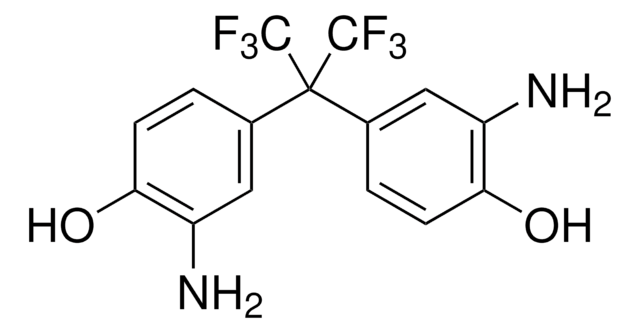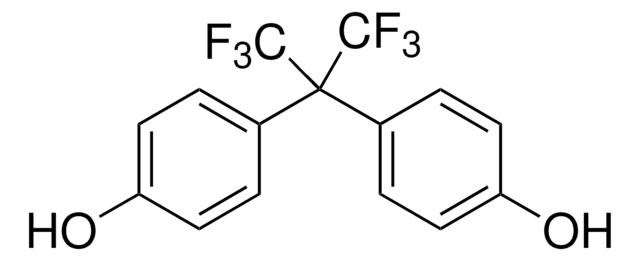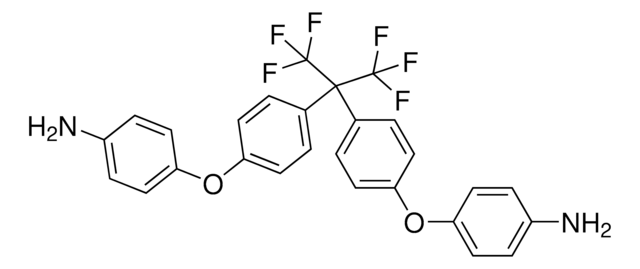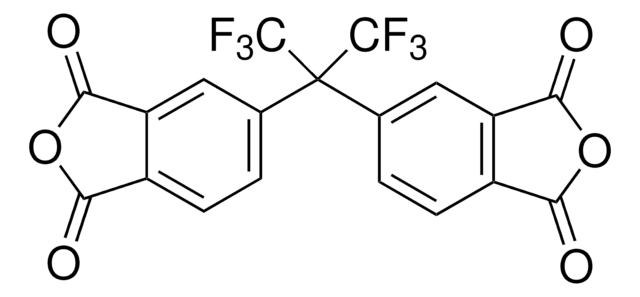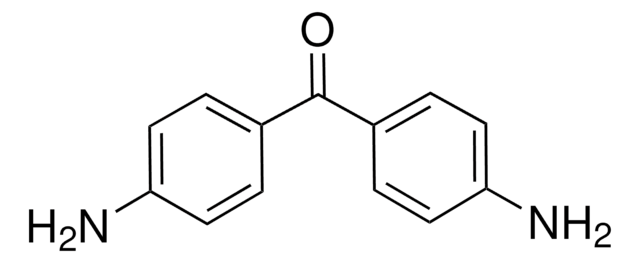Wichtige Dokumente
368148
4,4′-(Hexafluorisopropyliden)dianilin
98%
Synonym(e):
2,2-Bis(4-aminophenyl)hexafluoropropane, 4,4′-(Hexafluoroisopropylidene)dianiline
About This Item
Empfohlene Produkte
Assay
98%
mp (Schmelzpunkt)
195-198 °C (lit.)
SMILES String
Nc1ccc(cc1)C(c2ccc(N)cc2)(C(F)(F)F)C(F)(F)F
InChI
1S/C15H12F6N2/c16-14(17,18)13(15(19,20)21,9-1-5-11(22)6-2-9)10-3-7-12(23)8-4-10/h1-8H,22-23H2
InChIKey
BEKFRNOZJSYWKZ-UHFFFAOYSA-N
Lagerklassenschlüssel
11 - Combustible Solids
WGK
WGK 3
Flammpunkt (°F)
Not applicable
Flammpunkt (°C)
Not applicable
Persönliche Schutzausrüstung
dust mask type N95 (US), Eyeshields, Gloves
Hier finden Sie alle aktuellen Versionen:
Besitzen Sie dieses Produkt bereits?
In der Dokumentenbibliothek finden Sie die Dokumentation zu den Produkten, die Sie kürzlich erworben haben.
Kunden haben sich ebenfalls angesehen
Artikel
Fluorocarbon polymers, like small-molecule fluorocarbons, exhibit increased thermal stability, hydrophobicity, lipophobicity, improved chemical resistance, and decreased intermolecular attractive forces in comparison to their hydrocarbon analogs.
Unser Team von Wissenschaftlern verfügt über Erfahrung in allen Forschungsbereichen einschließlich Life Science, Materialwissenschaften, chemischer Synthese, Chromatographie, Analytik und vielen mehr..
Setzen Sie sich mit dem technischen Dienst in Verbindung.
